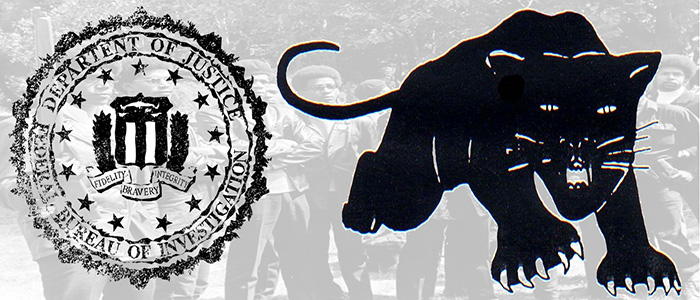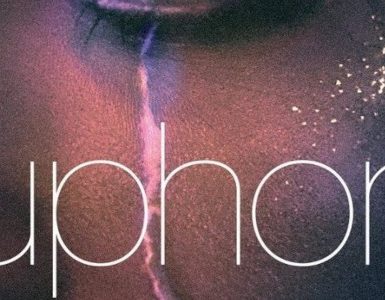Judas and The Black Messiah, directed by Shaka King, is a dramatization of the final year of Chairman Hampton’s life before his assassination. The Chicago State Attorney attempted to paint a false narrative about the assassination, claiming police were defending themselves against the gunfire of the Panthers. The media also slandered the characters of Hampton and Clark. However, the film debunks many of these narratives. It also sheds light on information that was once hidden by the FBI. One important fact is the involvement of William O’Neal, an FBI informant who also served as Hampton’s head of security.
Daniel Kaluuya portrays Hampton as the decisive, sometimes-too serious, but loyal to his comrades Chairman of the Black Panther Party. Playing Hampton’s fiancee, Dominique Fishback compliments Kaluuya beautifully. History painted Hampton, Johnson, and fellow Panthers as highly militant, unsmiling, brooding figures. In the film, Kaluuya and Fishback present a more humane version. That instead of anarchists, these were young adults who sought justice for their communities and found love in each other and their comrades. That changing a society where being Black was a crime was more important than the wistfulness of youth.
While the film grants a more down-to-earth depiction of Hampton, the audience is taken into the mind of O’Neal, the Judas played by Lakeith Stanfield. The real-life William O’Neal was only 18 years old when he was recruited by FBI agent Roy Mitchell, played by Jesse Plemons. This is by no means an absolving of O’Neal’s involvement but it does bring a layer of complexity. Stricken with the fear of incarceration, O’Neal possibly felt he had no alternative.
Police brutality, poverty, and gang violence plagued the urban centers of America and many Black people did not adopt a Black liberation ideology. It was simply survival. Mitchell granted O’Neal a way to ensure his own survival. To look at the scenario over 50 years later and chastise him, is a tad unfair. Stanfield showed us in stellar detail the internal struggle of a young man who grew close to the Black Panther Party but had chosen a life of deceit for his own gain.
Chairman Fred Hampton
In 1960s Chicago, the Black Arts Movement was in full swing. Where the Harlem Renaissance gave us refined, African American art and literature. The Black Arts Movement was much brasher and radical in its political ideologies. As the Black Panther Party rose in prominence, a young man by the name of Fred Hampton quickly aligned with its mission for Black self-determination. In 1968 he joined the Panthers and rose to become the Chairman of the Illinois Chapter. At the young age of 19, Hampton was a gifted orator and organizer. It was this gift that allowed him to form the Rainbow Coalition, a conglomerate of Chicago political activist groups of diverse backgrounds.
A multicultural movement eased tensions between the groups and gave them a common enemy: the government. Hampton helped broker a truce between several of Chicago’s gangs, urging them that the fighting amongst each other will only keep them in a cycle of poverty. Although a little green around the ears, Chairman Hampton held an aura about him that drew masses towards him. His vision for Black liberation was not one of symbolism but radical action. For the 2 years he sat as chairman, Hampton strove for the advancement of all marginalized communities.
This did not sit well with Chicago law enforcement led by state attorney Edward Hanrahan. In December of 1969, the state attorney office, Chicago police force, and FBI orchestrated a pre-dawn raid on Hampton’s first-floor apartment. The raid resulted in the deaths of Mark Clark and Fred Hampton and the injuries of 6 others. In January, a coroner’s jury ruled Clark’s and Hampton’s deaths as justifiable homicides. Their deaths were deemed assassinations after the COINTELPRO program was discovered.
The Panthers
These assassinations did little, however, to subdue the fight for equality. On the contrary, it proved how necessary the struggle was. As one leader fell, another would pick up where they left off. In October of 1966, Merritt College classmates Huey P. Newton and Bobby Seale formed the Black Panther Party for Self Defense in Oakland, California. Breaking away from the nonviolent tactics and integrationist ideals put forth by Martin Luther King Jr., the Black Panther Party held the ideals of Black nationalism, socialism, and armed defense against police brutality.
The Party’s initial goals were to patrol Black neighborhoods and monitor police activity. However, their popularity grew as they adopted community programs such as free breakfast for school children and free health clinics. At the height of their reign, the Panthers had roughly 2,000 members with chapters in the urban centers of New York, Chicago, Los Angeles, and Philadelphia. Wearing black berets, sunglasses, all black clothing, and guns, the Panthers served as the militia for the Black Power movement.
The ’60s
The 1960s was a tumultuous time for America. On one hand, we were in a proxy war with the Soviet Union. Our mission was to eradicate the world of communism and socialism. On the other hand, we faced many battles on the home front. The Vietnam War, in which hundreds of thousands of young men were drafted, caused many Americans to question the government. Are capitalism and the American dream truly the best way of life?
In addition, the Civil Rights Movement pushed for legal reparations for Black people. Across the nation, groups and organizations mobilized to put pressure on local governments to pass laws for racial equality. Black people found a community where their needs will be met in these groups. In Memphis, Martin Luther King Jr. helped form the Southern Christian Leadership Conference. The Northeast chapters of the Nation of Islam rose in popularity due to the charisma and magnetic personality of Malcolm X.
COINTELPRO
During this time, the US federal government sought to quell protest and liberation movements. The threat of a Black insurrection was a more pressing agenda than the civil equality of all races. The FBI launched a program called COINTELPRO to disrupt these political organizations. Using divide and conquer techniques, the FBI would plant informants among the ranks of these groups to sow distrust and gain important information on their activities. Then director of the FBI, J. Edgar Hoover, spared no expense in eliminating what he called a “Black Messiah”: a leader who could unify the interest of Black nationalist groups. The government and supporters of the government regarded Black nationalist groups as overly militant and a threat to national security. This sentiment led to the assassinations of prominent leaders such as Malcolm X, Martin Luther King Jr., Medgar Evers, and Harry and Harriette Moore.
The Hard Truth
I also do not think that O’Neal is the antagonist in the film. O’Neal does give the layout of Hampton’s apartment to the FBI and drugs him to render him unconscious before the raid. These are crucial factors that led to the assassinations of Hampton and Clark. However, the film points its scope at a bigger target: the FBI. These were not grown men with a massive army. These were young people, no older than 22 years old. The government, hell-bent on the oppression of Black people, sought to pit its young people against each other.
In a 1984 interview with the Chicago Tribune, O’Neal remarked that he was able to sustain himself on the payments he received for providing information. He quickly realized, however, that he had just been a “pawn in a very big game.” In January of 1990, O’Neal committed suicide shortly after the public became aware of his involvement in the raid. It is believed his guilt drove him to it.
The film shows a government that was, and still is, hell-bent on suppressing anti-white supremacist ideals. So much so that it will corrupt the mind of one poverty-stricken youth and brutally end the lives of young visionaries. The true Judas in the film turns out to the US government. Its ideal of liberty for all is a sham. It veils a sinister agenda to maintain poverty and crime for its own profit.
Judas and the Black Messiah is available for viewing at select theaters and will be available to stream on HBO MAX until March 14, 2021.


















Add comment